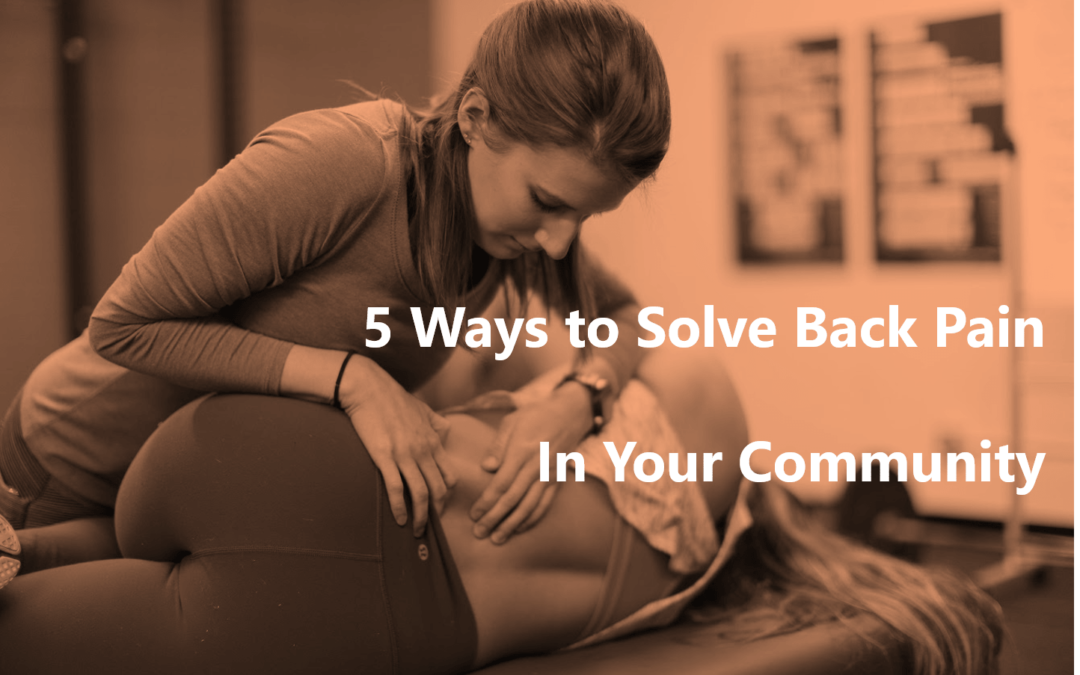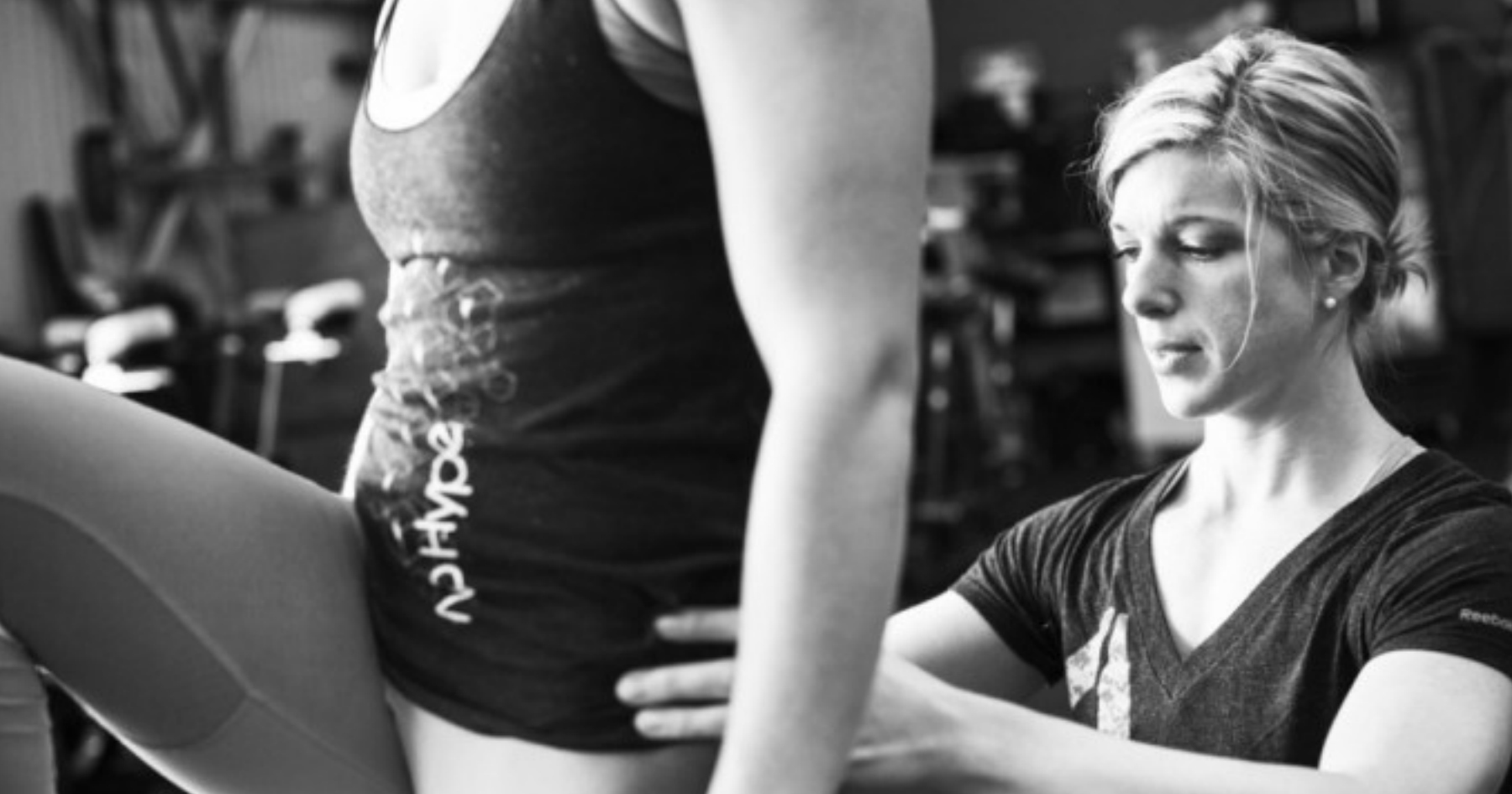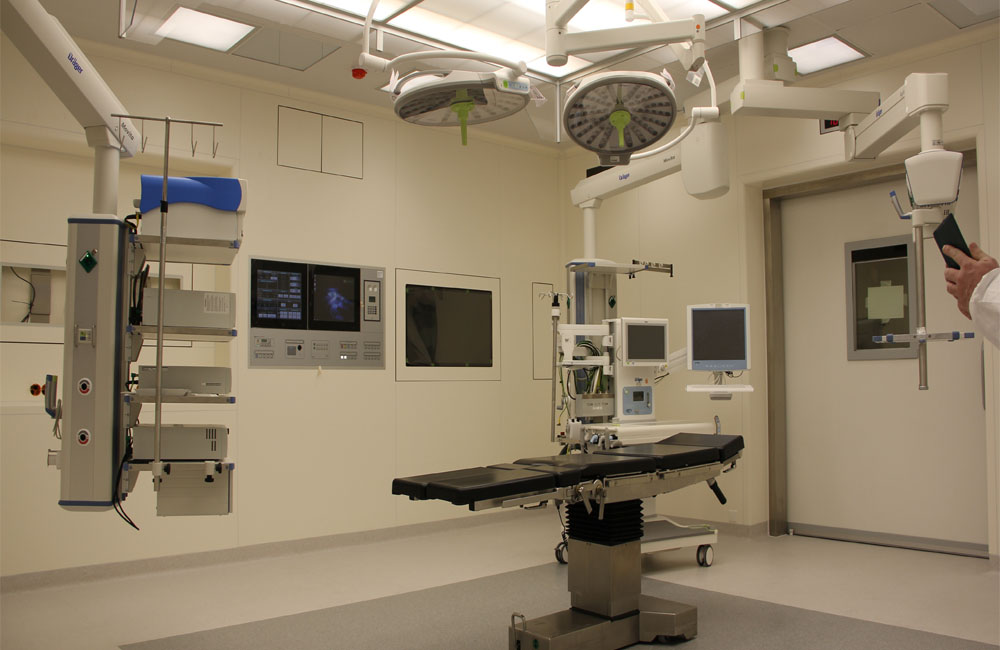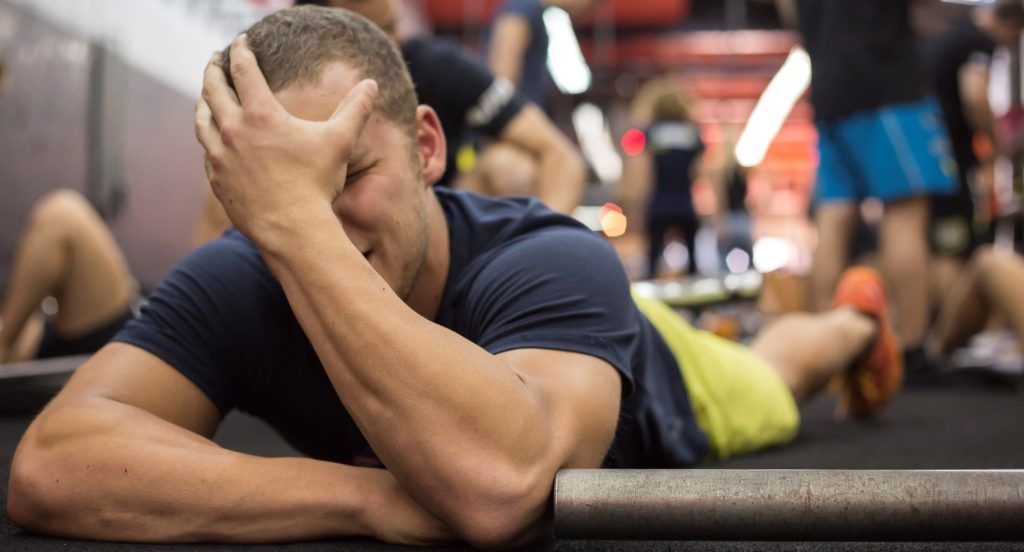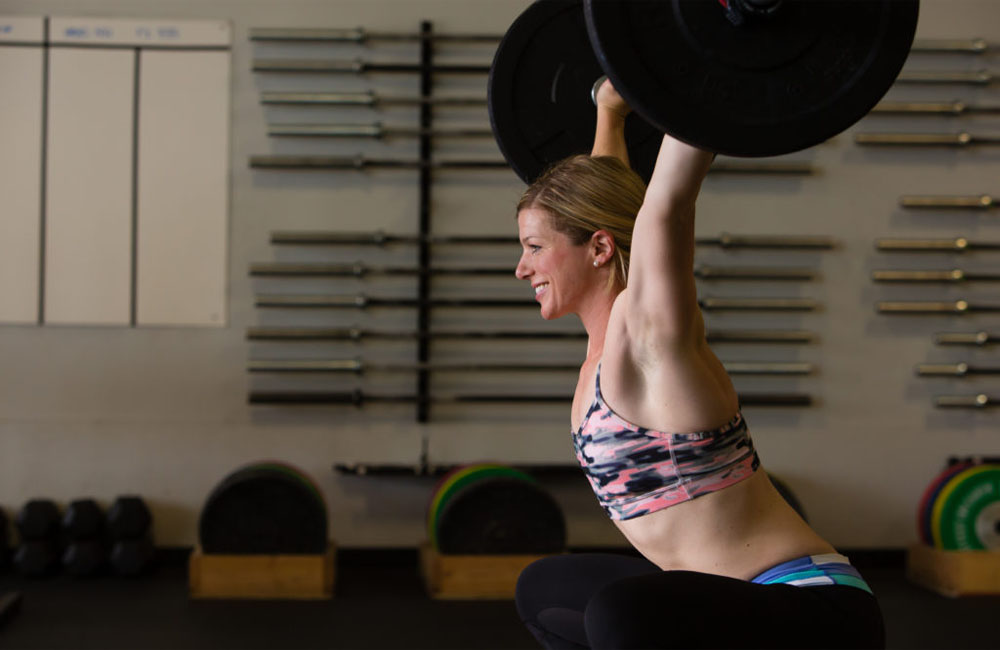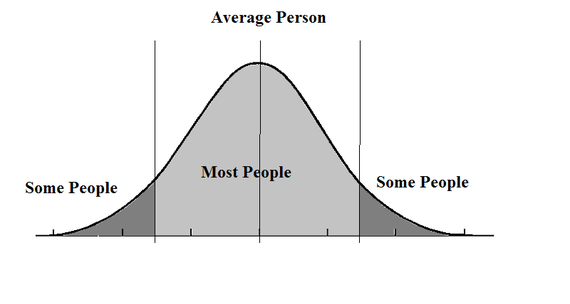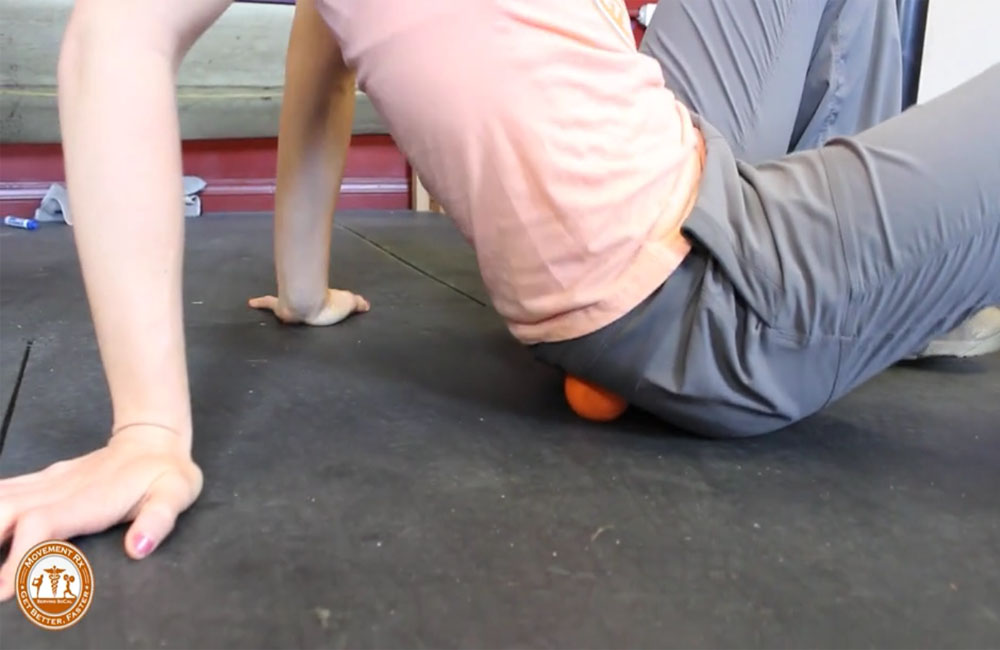Spoiler alert: While this article DOES provide 5 ways to solve Back Pain in your community, even more than that it’s about building and defending your business. The business of health and fitness is changing. RAPIDLY. To sustain your business – whether it is a fitness facility, chiropractic or physical therapy practice, or a stable of personal training clients – you MUST be ready and willing to evolve.
With that in mind, let’s talk about solving low back pain, shall we?
Some Myths of Back Pain
I’m married. I find that at the beginning of any conversation with my wife, it’s helpful to quickly uncover the assumptions we both carry on the topic at hand. It’s purely for self-preservation. This way I get to know where the land mines might be before jumping on one with both feet.
What does this have to do with back pain? There’s SO MUCH misinformation about causes and solutions for back pain, I find it’s helpful to be clear on basic assumptions before continuing on.
Take the 2 minute survey below (no need for contact info – just see where your assumptions lie).
Some of those were surprising, right? Whether you got 2 correct or all 8 correct is irrelevant. What’s important to understand is that most commonly held beliefs on back pain are wrong. Rest, pills, or surgical procedures are all mostly incorrect. Movement health is the key to solving back pain in both a fitness and healthcare setting.
Let’s explore some of the reasons these widely held beliefs are perpetuated.
The ROI of back pain
According to the American Academy of Pain Management, fully 80% of Western adults will have back pain in their life. Recent data from the Center for Disease Control and Prevention (CDC) and National Center for Health Statistics (NCHS) suggest that 28 million US adults have chronic back pain at any one time. This does NOT include acute pain, by the way.
Let’s put back pain into perspective compared to other health issues.
| Issue | Number of Americans | Source |
|---|---|---|
| Back Pain | 28.1 million | National Academies of Science |
| Diabetes | 25.8 million (diagnosed and estimated undiagnosed) |
American Diabetes Association |
| Neck & Shoulder Pain | 24.1 million | National Academies of Science |
| Knee Pain | 19.5 million | National Academies of Science |
| Coronary Heart Disease (heart attack and chest pain) Stroke |
16.3 million 7.0 million |
American Heart Association |
| Cancer | 11.9 million | American Cancer Society |
Back pain is a HUGE market and economic engine. In 2011, Forbes magazine estimated that the back surgery market in the US was $40 billion. Research on typical back surgeries shows an average price of over $100,000 for a fusion surgery, with nearly 55% of that cost due to expensive medical implants.
The companies that produce medication, medical devices, and operate surgical centers have a strong interest in maximizing the number of patients they see. Billions of marketing dollars are spent promoting pills, medical devices, and by extension, procedures.
A quick review of the U.S. Securities and Exchange Commission filings of public medical device companies show significant marketing budgets. Biomet Zimmer, for example, spends nearly 40% of revenues on marketing.
Those dollars inform doctors and other health professionals, and therefore impact suggested courses of action.
Why is this relevant to you?
96% of back pain cases are completely avoidable, and are solved and avoided through movement health. Not surgical procedures. Not pills.
I’m sure that I am preaching to the choir, but there are many people in your community that need convincing.
You see, the economics of movement health are not sexy. There’s no multi-billion dollar effort to influence doctors to believe that training someone to move well can solve nearly all back issues. Avoiding surgery and prescriptions does nothing for healthcare titans’ return on investment (ROI).
Movement health also does not fall into a single medical silo. It blends behavioral health, emotional energy, physical therapy, chiropractic care, human performance, and pain management. This makes it difficult to research, meaning it won’t get university or grant dollars like new pharmacological compounds or device technologies.
What does this all mean? There’s an enormous opportunity to help guys like the one above for the people who serve on the front lines of healthcare. Coaches, trainers, physios, and chiros.
Actual Causes of Back Pain
Let’s talk about the actual causes of back pain. If you have a minute, take a look at this list we created a while back.
When considering the back pain you can influence, let’s disregard the 4% of cases due to accidents or trauma, and focus on that fat 96%. The most common back pain diagnosis we see in physical therapy referrals from doctors is M54.5. This is also known as ‘non-specific back pain’ in plain English, meaning the immediate cause is not clear.
In about 10% of all back pain cases a cause is thought to be identified – a bulging disc, for example. For the remaining 90%, it’s a big shrug of the shoulders and prescription for pain meds and/or a suggestion to stop the activities where you feel that pain.
That’s totally useless counsel and unwittingly encourages future bouts of back pain.
The reality is that for the majority of cases we KNOW exactly why back pain occurs. There are 4 keys to understanding why back pain might appear, each building on the previous key. These same keys provide guidance on how to solve these cases. At Movement Rx we call this system of keys the Pyramid of Physical Freedom.
We call it a pyramid for a reason. The lower the layer, the more important it is to a successful build. It’s not built as a block or a cylinder because the layers aren’t equal.
Let’s start with an overview.
- The Base (Tier 1). Overall health and musculoskeletal health begins with the base. Your central nervous system needs to be under control to have any chance at being pain free. Since modern humans are generally in endocrine hyper-drive (re: always available messaging, caffeine, sugar, sleep deprivation, financial or relationship stress), we approach this through downregulation of the nervous system.
- Tier 2. Next in importance is the optimal functioning of the body’s tissues and joints. We call this mobility and stability, and at Movement Rx we determine this through a proprietary set of movement assessments that identify limitations across each joint area. These assessment scores allow us to customize mobility and stability training.
- Tier 3. With movement limitations identified, quality movement patterning is programed to help you layer on healthy joints and tissues to build trust between your brain and body.
- Tier 4. The final step is to build strength in those patterns and the conditioning to keep those patterns over time – the apex of the pyramid.
We find that most coaches and trainers start and stop in Tier 4 – Strength and Conditioning. Some may dabble in Tier 2 (thanks to our colleague Kelly Starrett) and Tier 3. On the healthcare side, most physios and chiros work in Tier 2 but are mediocre in Tier 3 and terrible in Tier 4. Some acupuncturists and massage therapists provide some benefit in Tier 1. Hardly anyone systematically builds a client’s pyramid of physical freedom.
Let’s dig deeper, starting at the top of the pyramid.
Tier 4: Strength and Conditioning to Fix Back Pain
Strength training is a necessity for health and longevity. There is absolutely no way around it. Without strength, your body will lose its ability to move external objects, your own bodyweight, and in time, movement will become a struggle.
Harvard Medical School explains, “strength (or resistance) training is critical to preserving the ability to perform the most ordinary activities of daily living — and to maintaining an active and independent lifestyle.” Your ability to enjoy life is uniquely linked to the strength of your joints, connective, and muscle tissue.
The major misconception is that strength training will hurt you. “Squats are bad for your knees and deadlifts are bad for your back.” You may have even injured your back deadlifting or squatting. This, generally speaking, could not be further from the truth. What leads to injury is a misunderstanding of functional movement patterns and their importance in joint and tissue health.
If you lift or exercise without a) training movement mechanics, b) working within your mobility and stability dysfunctions, and c) managing your neuro-endocrine state, your muscles tense up. This tension is your brain troubleshooting and protecting your joints. When tension is held in the muscles, the joints are compromised. For a stability joint like the low back, this means it manifests as pain.
So how do you eliminate tension in your muscles? The answer starts in Tier 3 – quality movement patterning.
Tier 3: Quality Movement Patterning
Poor movement patterns are almost always fixable. Posture, walking, running, pulling, pushing, hinging, squatting, lunging, etc. Let me explain .
Human movement is part nature, part nurture, and part practice.
- Nature: We all have certain biomechanics we are born with. Let’s assume a normalized distribution of body types across humanity – the old bell curve from stats class. 90-95% of us have very similar biomechanical ratios. It’s only for the Manute Bols, Andre the Giants and others with body types that are statistical outliers that nature can be a viable explanation for poor movement patterning.
- Nurture: We subconsciously observe and mimic how those around us move, especially during our youngest years. However, even if your parents or other family were poor movers, nurture has its own bell curve. The vast majority of us were exposed to relatively similar movement patterns.
- Practice: While some have biomechanical (nature) or nurture advantages, practice is by far the biggest driver of movement patterns. We reinforce movement patterns – good and bad – through time spent working on a jump shot, a piano sonata, a power clean, a computer. Keep in mind there is intentional practicing – the athletic and musical examples given above. There is also unintentional practicing. Examples include 10-12 hours sitting every day, 5 hours spent vulture-necking over a phone, walking 5,000 steps a day on an ankle with poor dorsiflexion, or taking 20,000 daily stress-filled breaths.
If I had to put a number on it, based on qualitative observations of our team and quantitative scores on thousands of our assessments, only 10-12% of adults move well enough to not qualify as an injury waiting to happen. That’s by no means scientific, but it does reinforce the enormity of the opportunity to help people.
So how do you fix movement patterns? There are many levers, but a core one is fixing the limitations we’ve developed in tissue and joint function. Aka Tier 2 – mobility and stability.
Tier 2: Mobility and Stability – Finding Optimal
Why does laying on a lacrosse ball feel like a small piece of your soul is being torn out of you?
That stupid, little ball had good intentions until Dr. Kelly Starrett started telling people they needed to “mash” their tissues. How can a tiny little ball inflict so much pain?
In the Pyramid of Physical Freedom, mobility and stability are prerequisites to strength and conditioning and quality movement patterning. You want to focus on tissue and joint health before repatterning and before loading. If you don’t you’ll be hardwiring strength on movement dysfunction. No Bueno.
Every joint in your body has an optimal range of motion (ROM), i.e. the amount that joint is designed to flex, extend, and rotate. Mobility refers to tissue length and stability describes your ability to control the ROM of that joint. Lacking mobility or stability limits your joint’s healthy ROM and leaves you vulnerable to chronic pain and injury.
When you hop on the lacrosse ball you will see mobility changes – in the short term. Tissues will loosen up and you will find new ranges of motion. In the long term, however, the changes quickly revert. You learn that even though you see changes in your movement, the pain does not go away.
You need to move down the physical freedom pyramid.
Tier 1: Downregulating The Nervous System – The Base of the Pyramid
The stress of life (work), coupled with poor movement (sitting), amplified by loaded (weights), intense (high rep, fast) training is stored deeper than the tissues and joints. The pain is stored in your nervous system, in the wiring of how your brain communicates to your body.
The nervous system is the control panel for everything you do. Simplified, your brain sends signals to your body. These signals fire, moving your body in accordance with your functional movement patterns. If they fire poorly, due to inflammation, tension, stress, or habit-formed neural pathways, your brain recognizes harm. In response to the potential for harm, the brain blocks that movement by sending a pain signal to that joint or tissue to limit its ROM.
Your clients head to work and deal with a high stress job bookended by nasty commutes. They take on this emotional and mental stress sitting down, with a poor posture, creating tension throughout your body. This tension, caused by stress and inflammation, is called neural tension. You cannot stretch it nor roll it out, and it wreaks havoc on their movement and health.
According to a study in the Journal of Orthopaedic and Sports Physical Therapy, nerves can become sensitized to this stress under certain circumstances, such as the presence of inflammation or preexisting physical damage. When this occurs, normal ranges of motion can cause pain, numbness, tingling or other signs of nerve-related distress.
The base level to the Pyramid of Physical Freedom is training the nervous system and downregulating stress to drastically reduce neural tension. To begin the process of relieving stress, you have to slow clients down and activate the parasympathetic rest and digest response in their bodies.
Moving Up the Pyramid
The path to physical freedom is discovered in reverse. As humans it is our nature to chase goals and get out of pain. As a health or fitness professional, you work with clients who want to play, compete, or just feel better.
If you’re a Coach or Trainer, you help clients get stronger, leaner, more in shape. As a health practitioner, you work to get clients out of immediate pain. But without a systematic approach to the 4 Tiers of the Pyramid, you’re not providing clients with everything you can and should.
So how do you rebuild clients’ systems, eliminate lower back pain, and get your clients to the top of the Physical Freedom Pyramid?
- It’s not just about short hip flexors and weak glutes.
- It’s not just about poor squat and hinge patterns.
- It’s not just about immobility or instability in the above and below joints.
- It’s not just about chronic tension and endocrine overdrive.
It IS about all of the above and a ton more.
Latest posts by 5dmin (see all)
- 5 Reasons Why Your Corporate Wellness Program Is Not Working - June 13, 2019
- The Power of Assessments - May 9, 2019
- Healthcare and Fitness Partnerships - April 10, 2019





